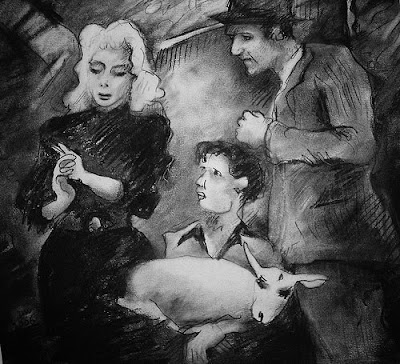Underworld's "Cowgirl" was released as a single in 1994 and is from their 1993 album dubnobasswithmyheadman. The video was produced by the design collective Tomato. Members of the collective are also members of Underworld.
Tomato is one of a number of design collectives that emerged in the early 1990s. Formed in ’91, Tomato is a “multidisciplinary studio and creative collective of designers, writers, typographers, film makers and musicians” (Livingstone, 2003 p.210).
It was established by “Steve Baker, Dirk van Dooren, Karl Hyde, Richard Smith, Simon Taylor, John Warwicker and Graham Wood, Jason Kedgley joined in 1994 and Michael Horsham in 1996” (Livingstone, 2003 p.210). Catherine McDermott also names Greg Rood and Steve Baker as members (1999 p.278).
Tomato. Dubnobasswithmyheadman by Underworld, 1993. Album cover.









































